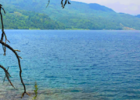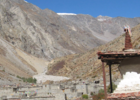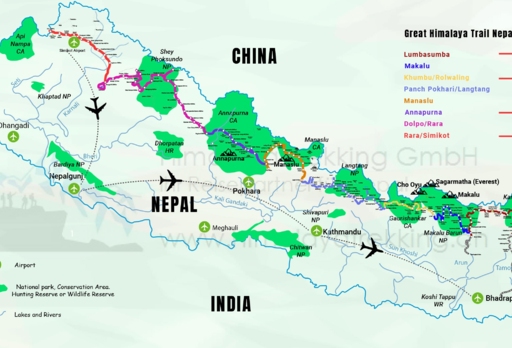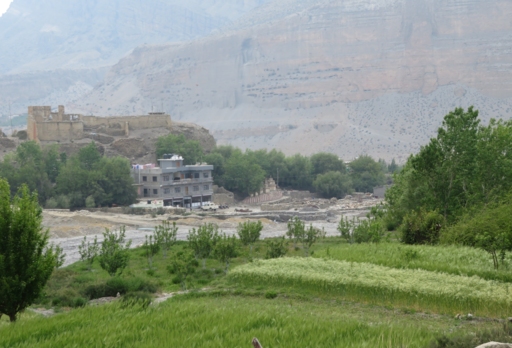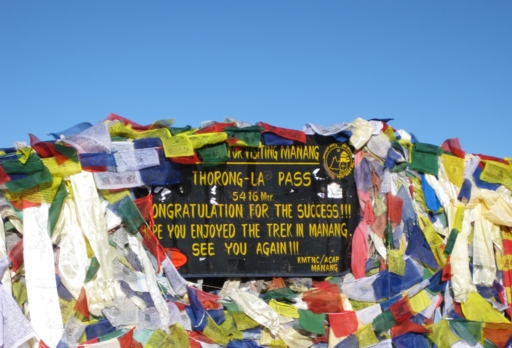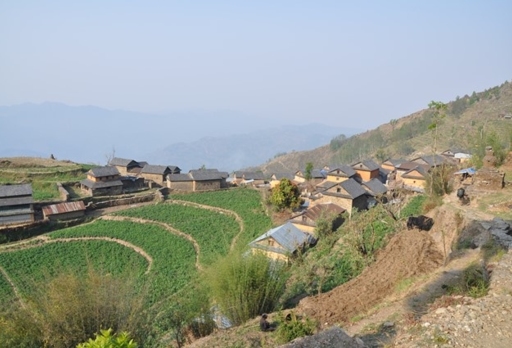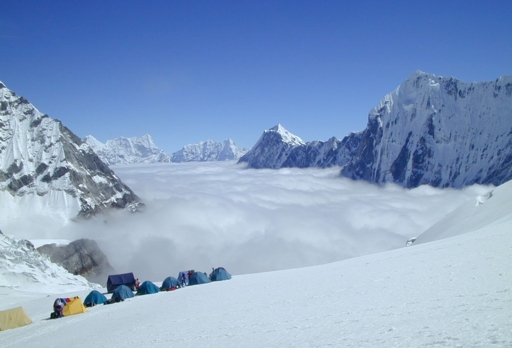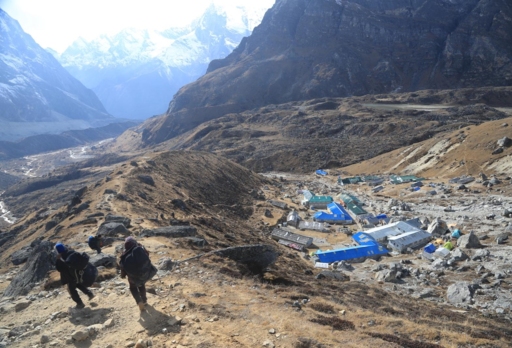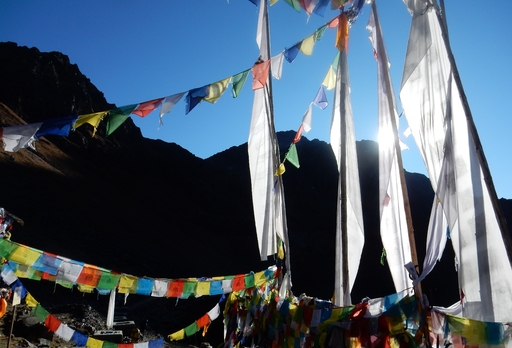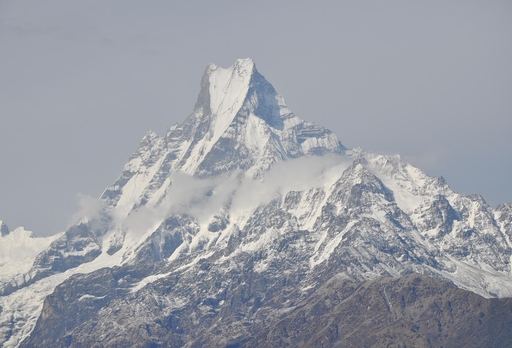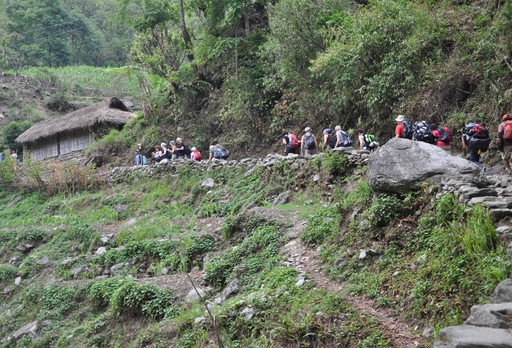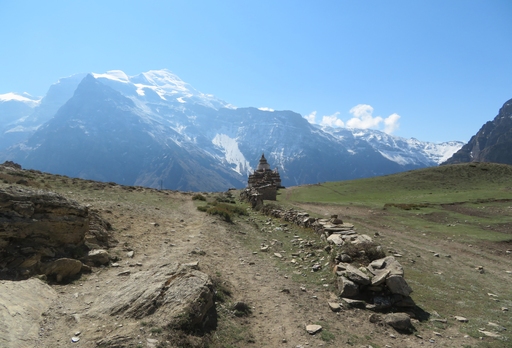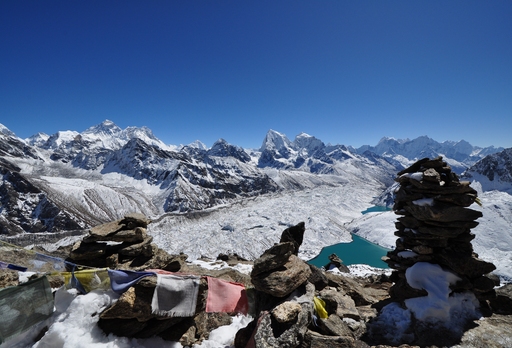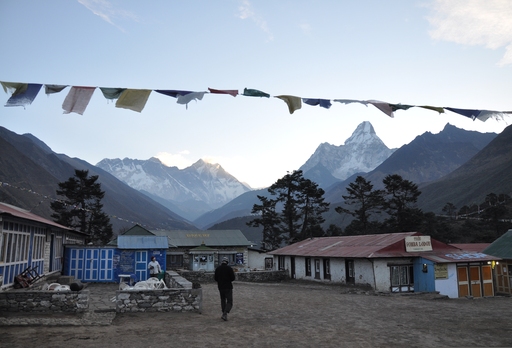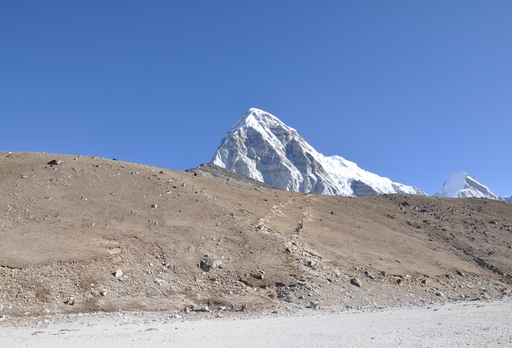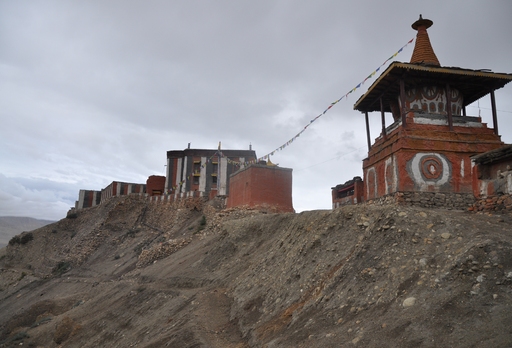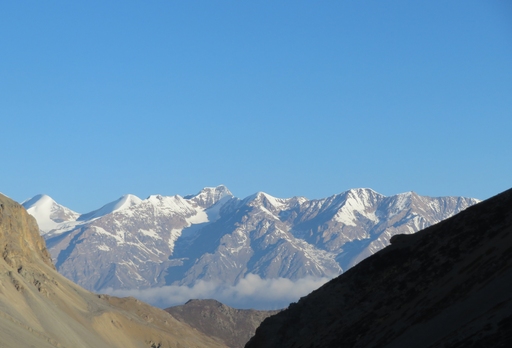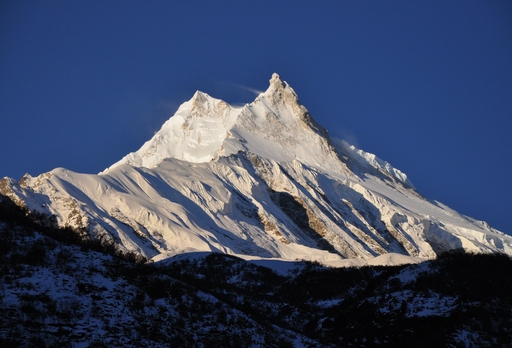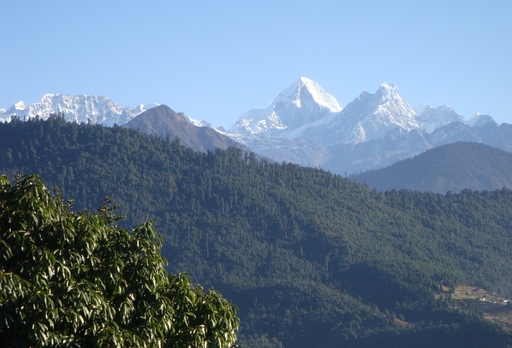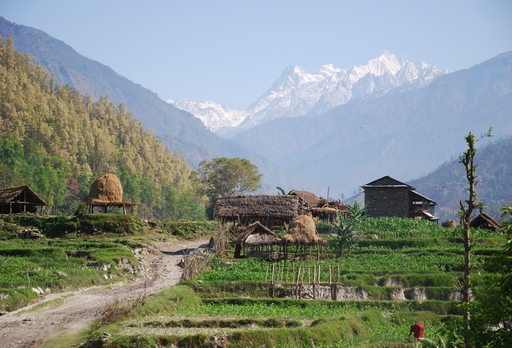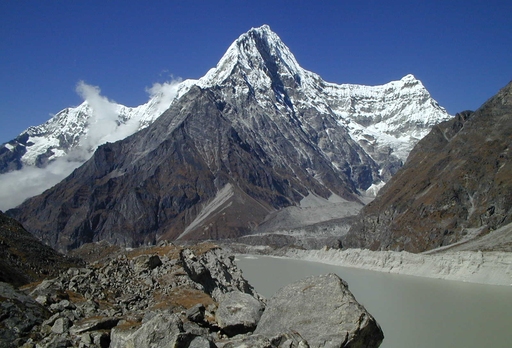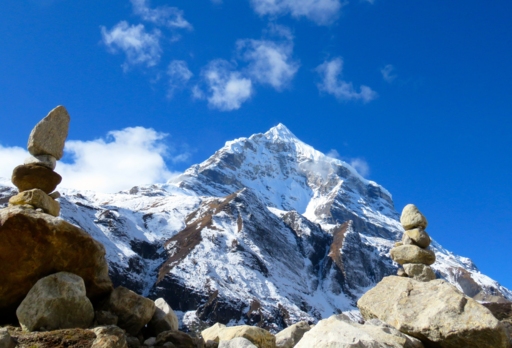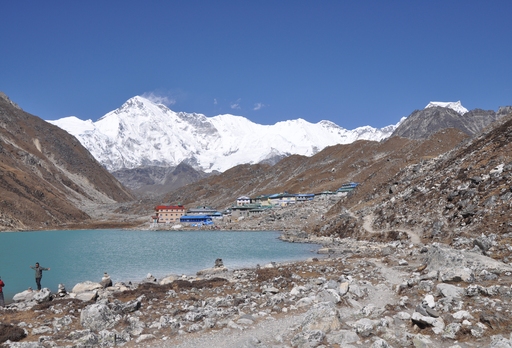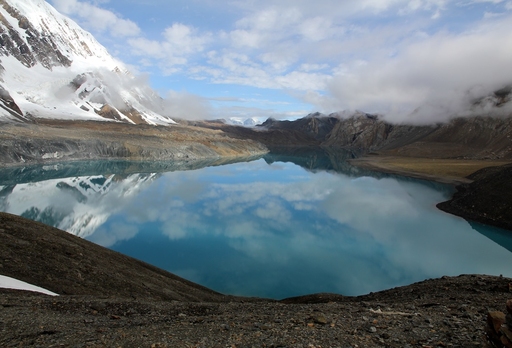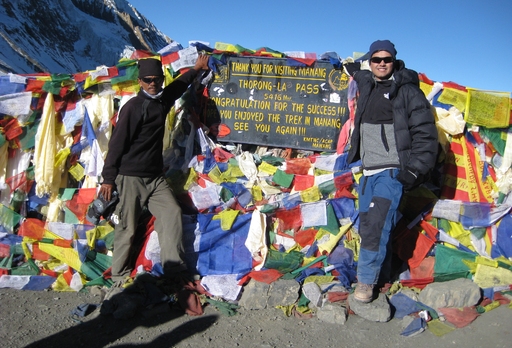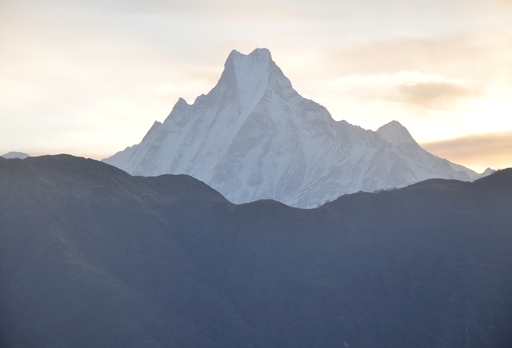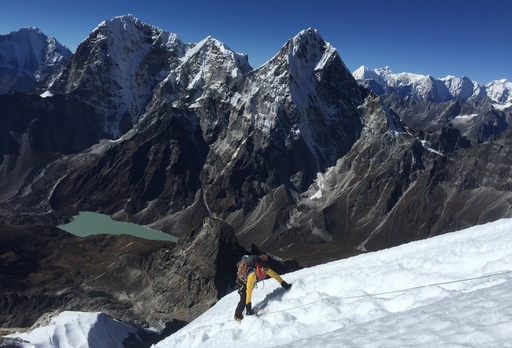Rara / Simikot Trekking
The trek from Jumla to Hilsa via Rara and Simikot is an adventurous trekking route in the western part of Nepal. The route takes you through remote valleys, over high passes, and past picturesque lakes and villages, offering a unique combination of breathtaking nature and cultural experiences. The trek begins in the main town of Jumla, in the district of the same name (unless there is an option to fly to Rara, in which case the trek would start at Rara). Along the way, you have an opportunity to experience the unique culture and lifestyle of the local communities. After leaving the Jumla Valley behind, you reach Rara Lake, one of the largest lakes in Nepal. Rara Lake is known for its clear waters and stunning natural beauty. You can camp on the shores of the lake and enjoy the peace and tranquility of the surroundings. From Rara, the trail continues to Simikot, the capital of the Humla region. Simikot is an important trading center and a cultural hub for the indigenous communities. You can admire the traditional architecture of the houses and learn about the local culture and way of life. From Simikot, the trail leads further to Hilsa, a small village on the border with Tibet.
1. Day - Arrival in Kathmandu
Transfer from the airport to the hotel and time at your own disposal.2. Day - Sightseeing Kathmandu
3. Day - Flight to Nepalgunj
4. Day - Flight to Rara (2370 MASL.)
5. Day - Trek to Gamghadi (Rara Lake) (3010 MASL.)
6. Day - Trek to Jogimara (3005 MASL.)
7. Day - Trek to Aul Puma (2800 MASL.)
8. Day - Trek to Punkha Khola (3010 MASL.)
9. Day - Trek to River Camp (3015 MASL.) via Margor Lek Pass (4037 MASL.)
10. Day - Trek to Simikot (2985 MASL.)
11. Day - Rest day in Simikot
12. Day - Trek to Kermi (2860 MASL.)
13. Day - Trek to Yari (3663 MASL.)
14. Day - Extra day
15.Day - Trek to Hilsa (3647 MASL.) via Chor Pass (4107 MASL.)
16.Day - Trek to Tumkot (3075 MASL.) via Chor Pass (4107 MASL.)
17. Day - Trek to Simikot (2985 MASL.)
18. Day - Flight to Nepalgunj
19. Day - Flight to Kathmandu
20. Day - A rest day in Kathmandu
21. Day - Depature Kathmandu
- Flexible daily routine
The daily routines described must be considered somewhat flexible, as they are adapted to local conditions (weather, new paths, etc.) as well as to your constitution. Your guide will plan and discuss the next day with you in the evening.
Include
- 2 nights Hotel in Kathmandu with breakfast
- Pick up and Drop service
- Kathmandu sightseeing
- All Transportation connecting to Trekking
- Flight Kathmandu - Nepalgunj - Rara & Simikot - Nepalgunj - Kathmandu
- Meals and Accommodations during the Trek
- Trekking Guide (Kamal Bhatta for Part of GHT 2026)
- Porters
- Trekking permit.
- Satellite Telephone
- Trekking insurance for trekking Crew
- Trekking bag of Himalaya Trekking
Exclude
- International Flight to Kathmandu and back
- Tips
- Meals in Kathmandu
- Aditional Accommodations in Kathmandu
- All drinks
Requirements
You will find the level of difficulty and the type of accommodation of each journey in the program.
Equipment
You are going to get an equipment list as recommendation together with your travel documents. The equipment for a tent trekking (tent, mattresses etc.) will be organized locally.
Luggage
You are allowed to check in 20 kg as well as you can take 5 kg of hand luggage with you. If you would like to travel with a trolley case, we kindly ask you to take an additional big backpack with you. Luggage which you do not need while trekking can be deposit for free in Kathmandu.
Entry
For the entry to Nepal you need a passport which is valid further than 6 month after your departure date. You will receive your visa upon your arrival at the airport in Kathmandu. You will be told about the visa expenses while booking, since the fee changes from time to time.
Health
Himalaya Trekking suggests seeing your doctor or a tropical doctor as early as possible so you will be informed about current provisions regarding injections. Pharmacy or a doctor will help you regarding your personal trip first aid travel kit.
Group size
Himalaya Trekking guarantees for every tour. We do not have any minimum size for a group, but we do have a maximum of 12 persons per tour.
Tour program
The daily program should be seen as very flexible since we have to consider the local circumstances as well as your physical condition. Your guide will plan with you every evening the next day.
Travel documents
You are going to receive the detailed travel documents with general information as well as your flight tickets 2 to 3 weeks before departure.
Tipping
The tip for the local guides and carrier are not included in the travel costs. It is common to tip them for a good performance.
Accommodation and meals
The overnight stays in Kathmandu and Pokhara will be in a middle class hotel. The restaurants can be chosen individually, as lunch and dinner are not included in the travel costs.
During a lodge trekking the hike will be trough village to village. You will stay overnight in a basic hostel and you are going to have your meals there or in a restaurant on the way. During the camp trekking you are going to stay in one man or two-person tents and all the meals will be provided by private cook.
Insurance
Himalaya Trekking recommends having travel insurance as well as a cancellation protection. We also recommend having a copy of your police with you.
Climate
The weather in Nepal is nice. The summer is together with the monsoon season from June to October, the rest of the year is dry. There is mild climate in the Kathmandu valley, during the summer time around 20-30°C and in the winter time around 0-15°C.
Please consider the climate for your travelling plans, since the county covers a height form 75 MASL to 8848 MASL. Therefor the climate changes and if you are in the wrong place to the wrong time you will probably not see the Himalaya. However there still is a suited journey for every time period!
Kontinent : AsienLandesgrenze : Im Norden: Himalaya (Tibet /China), Im Süden, Osten und Westen: Indien Lage : 26°20'- 20°26' Längengrad
80°03'- 88°26' BreitengradEinwohner : ca.29 Millionen Hauptstadt : Kathmandu (1350 M. ü. M) ca. 4 Millionen Einwohner Höchster Punkt : 8848 M. ü. M. (Mount Everest) Tiefster Punkt : 75 M. ü. M. (Terai) Baumgrenze : ca. 4500 M. ü. M. Schneegrenze : ca. 2500 M. ü. M. im Winter Himalaya (Berge) : 15% des Landes über 3000 M. ü. M. Hügelland : 68% des Landes 500 M. ü. M. - 3000 M. ü. M. Terai(Flachland) : 17% des Landes unter 500 M. ü. M. Tiere : Tiger, Nashorn, Elefant, Panda, Schneeleopard, Kuh, Yak, Wasserbüffel, 800 verschiedene Vogelarten, je nach Höhe Religionen
: Hindu 85%
Buddhisten 10%
Moslem 3%
Sonstige 2%Kasten : Brahmanen
Tschetri
Baishja
Sudra (Unberührbare)
61 verschiedene VolksgruppenSprache : Nationalsprache ist Nepali
Über 70 weitere lokale Dialekte und Sprachen
Englisch ist obligatorisch in der SchuleAnbau : Reis , Hirse, Buchweizen, Weizen, Kartoffeln,
Bananen, Mango, Ananas, Äpfel und viele andere Früchte und Gemüse je nach Temperatur und HöheTextil : Pashmina und Wollproduktion aus Yak Wolle Haupteinkommen : Agrar-Wirtschaft, Tourismus und Auslandarbeit. 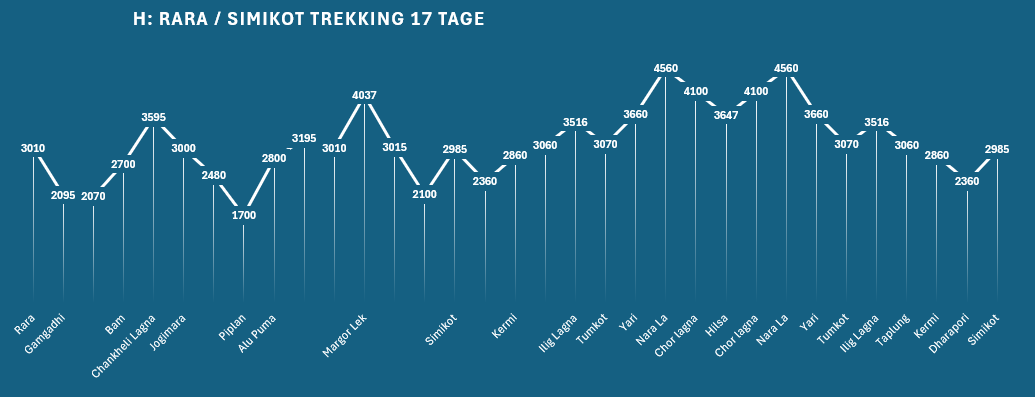
- Individual date request
Departure Date Vacant Places Days Price per Person 13 May 2026 9 19 CHF 5'290.00 Inquiry

